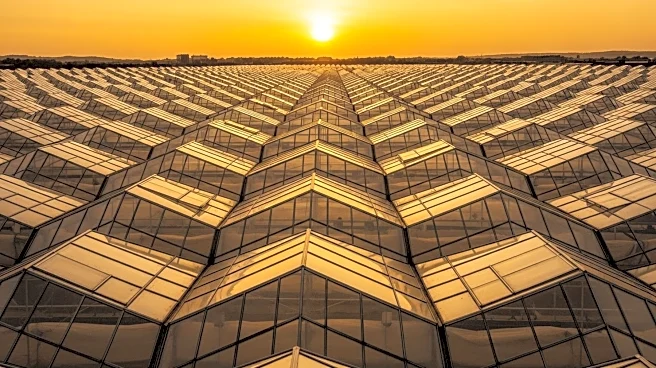What is the story about?
What's Happening?
A vast expanse of plastic-covered greenhouses in southern Spain, near El Ejido in Almería, has been identified as the most visible human-made structure from space. Covering approximately 32,827 hectares, these greenhouses reflect sunlight, creating a striking visual contrast against the surrounding landscape. This discovery challenges the long-held belief that the Great Wall of China is the only man-made object visible from space. The greenhouses' reflective surfaces have even contributed to a local cooling effect in the region, according to NASA analyses.
Why It's Important?
The visibility of these greenhouses from space highlights the significant impact of modern agricultural practices on the environment. While the plastic coverings have transformed the region into a highly productive farming area, they also pose environmental challenges due to the large amounts of plastic waste generated. This situation underscores the need for sustainable agricultural practices and effective waste management solutions. The findings also emphasize the importance of considering environmental and ecological impacts when implementing large-scale agricultural projects.
Beyond the Headlines
The environmental impact of the greenhouses extends beyond visibility from space. The plastic waste generated by intensive agriculture in Almería presents a significant management challenge, despite expanding recycling systems. This situation raises questions about the long-term sustainability of such agricultural practices and the potential consequences for local ecosystems. The study serves as a reminder of the complex interplay between human activities and environmental health, highlighting the need for innovative solutions to balance productivity with ecological responsibility.
AI Generated Content
Do you find this article useful?
















